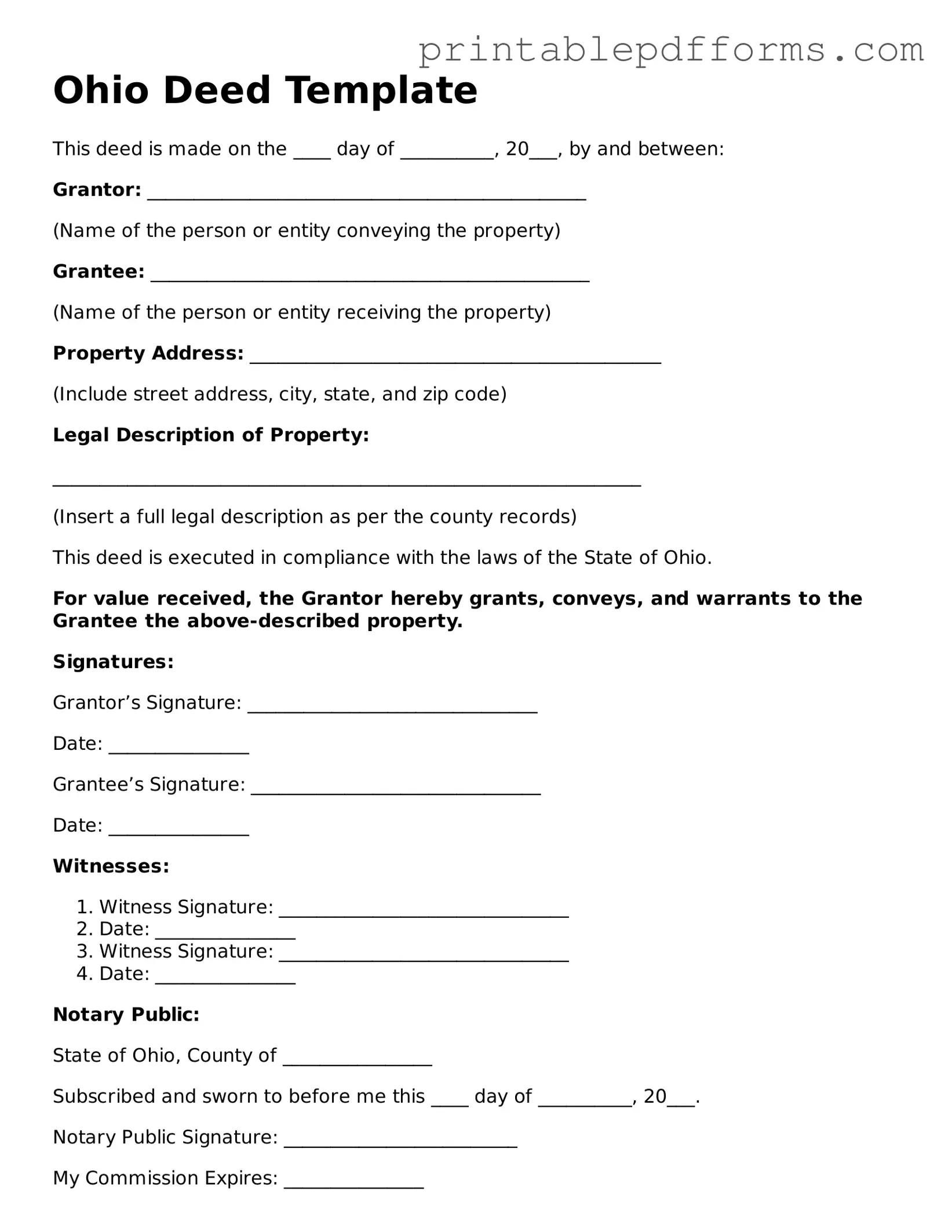Ohio Deed Template
This deed is made on the ____ day of __________, 20___, by and between:
Grantor: _______________________________________________
(Name of the person or entity conveying the property)
Grantee: _______________________________________________
(Name of the person or entity receiving the property)
Property Address: ____________________________________________
(Include street address, city, state, and zip code)
Legal Description of Property:
_______________________________________________________________
(Insert a full legal description as per the county records)
This deed is executed in compliance with the laws of the State of Ohio.
For value received, the Grantor hereby grants, conveys, and warrants to the Grantee the above-described property.
Signatures:
Grantor’s Signature: _______________________________
Date: _______________
Grantee’s Signature: _______________________________
Date: _______________
Witnesses:
- Witness Signature: _______________________________
- Date: _______________
- Witness Signature: _______________________________
- Date: _______________
Notary Public:
State of Ohio, County of ________________
Subscribed and sworn to before me this ____ day of __________, 20___.
Notary Public Signature: _________________________
My Commission Expires: _______________
